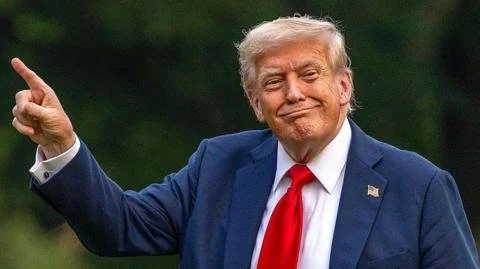Global Trade Shake-Up: Unpacking the Landmark US-Japan Deal and Its Impact on Asia
In a groundbreaking agreement, US President Donald Trump has hailed the trade deal with Japan as the “largest trade deal in history,” although some experts caution that such claims may be a bit premature. The deal comes on the heels of Trump’s previously announced tariffs, which sent tremors through global markets and threatened the economic stability of nations involved in international trade. Japanese Prime Minister Shigeru Ishiba asserts that the agreement will bolster the global economy, especially considering Japan’s role as the world’s fourth-largest economy, heavily reliant on energy and food imports as well as exports of electronics and vehicles.
The trade deal is poised to benefit Japanese exporters by reducing the tariffs on Japanese automobiles from 27.5% to 15%, giving companies like Toyota, Honda, and Nissan a competitive edge, especially against rival exporters from China. It is seen as a critical win for Japan, particularly in light of previous warnings that US tariffs could potentially push Japan into recession by a percentage point. Furthermore, the deal promises stability for Japanese businesses, allowing them to plan future investments and operations more effectively.
Trade relations are set to strengthen further as Japan commits to investing $550 billion in the US, focusing on sectors crucial for supply chains, such as pharmaceuticals and semiconductors. The deal also encourages Japan to increase its purchase of US agricultural products, including rice, which holds significant implications for local farmers’ livelihoods. However, as US automakers express discontent with the preferential treatment granted to their Japanese counterparts, tensions rise regarding tariff disparities.
The implications of this deal ripple across Asia, prompting countries like South Korea, Vietnam, Indonesia, and the Philippines to reconsider their own trade negotiations with the US. Japan’s agreement sets a benchmark that other Asian nations must navigate carefully, especially smaller economies like Cambodia and Sri Lanka, which may lack leverage in trade discussions.
Despite potential benefits, the US-Japan agreement has prompted concerns across political and economic circles. While it strengthens economic ties, discussions about introducing military spending boost tensions, though officials clarify that defense spending was not part of the deal. With the added pressure of a self-imposed tariff deadline nearing, the US intensifies efforts to finalize more trade agreements, as echoed by initiatives from Japan and Europe to collaborate more closely against economic coercion.
As international negotiations unfold, this monumental trade agreement not only reshapes US-Japan relations but also signals potential shifts in the global trade landscape, compelling nations worldwide to reevaluate their strategies in an increasingly complex and competitive market.

